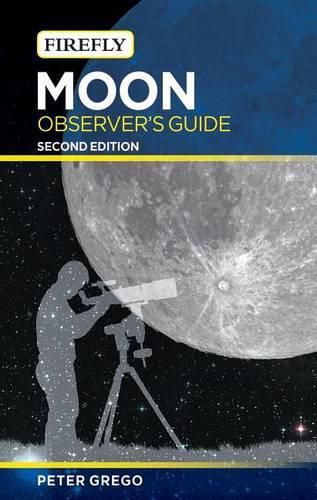Readings Newsletter
Become a Readings Member to make your shopping experience even easier.
Sign in or sign up for free!
You’re not far away from qualifying for FREE standard shipping within Australia
You’ve qualified for FREE standard shipping within Australia
The cart is loading…






Since publication of the first edition of this book, we have enjoyed more than a decade of new readings and images taken by shuttles, rovers, and the Hubble Telescope. Each time they have passed by, orbited, and landed on the Moon we have accumulated an incredible amount of data about our satellite and about the rest of the galaxy. In the same period, stargazing technology has advanced to an unprecedented level of sophistication. Even basic low-tech binoculars and telescopes permit astounding views of the night sky.
In clear language and with full color photographs and illustrations throughout, this second edition of Moon Observer’s Guide has been updated and revised throughout to incorporate these exciting advances, including more than 20 new images and information about new digital imaging techniques and technology, such as DSLR (digital single lens reflex) cameras, webcams, and mobile apps. The updates also include the latest science garnered from lunar probes and missions recently and currently exploring the Moon.
The topics include:
The birth of the Moon
The Moon’s orbit
Moonlight
Guidelines for choosing binoculars and telescopes
Ways of recording observations
Digital and conventional photography
Using internet resources, personal computers and lunar software programs
Safety tips for observing the Moon during solar and lunar eclipses
Eclipses and occultations
The space-age Moon.
Moon Observer’s Guide provides practical guidance to amateur astronomers viewing Earth’s only natural satellite whether with the naked eye or binoculars and telescopes. Central to the book is the detailed 28-day Moonwatching guide, complete with maps, that describes lunar geology and the various causes of physical features, such as craters and volcanoes.
This is an ideal reference for beginning and experienced astronomers alike, and an essential for library collections large and small.
$9.00 standard shipping within Australia
FREE standard shipping within Australia for orders over $100.00
Express & International shipping calculated at checkout
Since publication of the first edition of this book, we have enjoyed more than a decade of new readings and images taken by shuttles, rovers, and the Hubble Telescope. Each time they have passed by, orbited, and landed on the Moon we have accumulated an incredible amount of data about our satellite and about the rest of the galaxy. In the same period, stargazing technology has advanced to an unprecedented level of sophistication. Even basic low-tech binoculars and telescopes permit astounding views of the night sky.
In clear language and with full color photographs and illustrations throughout, this second edition of Moon Observer’s Guide has been updated and revised throughout to incorporate these exciting advances, including more than 20 new images and information about new digital imaging techniques and technology, such as DSLR (digital single lens reflex) cameras, webcams, and mobile apps. The updates also include the latest science garnered from lunar probes and missions recently and currently exploring the Moon.
The topics include:
The birth of the Moon
The Moon’s orbit
Moonlight
Guidelines for choosing binoculars and telescopes
Ways of recording observations
Digital and conventional photography
Using internet resources, personal computers and lunar software programs
Safety tips for observing the Moon during solar and lunar eclipses
Eclipses and occultations
The space-age Moon.
Moon Observer’s Guide provides practical guidance to amateur astronomers viewing Earth’s only natural satellite whether with the naked eye or binoculars and telescopes. Central to the book is the detailed 28-day Moonwatching guide, complete with maps, that describes lunar geology and the various causes of physical features, such as craters and volcanoes.
This is an ideal reference for beginning and experienced astronomers alike, and an essential for library collections large and small.